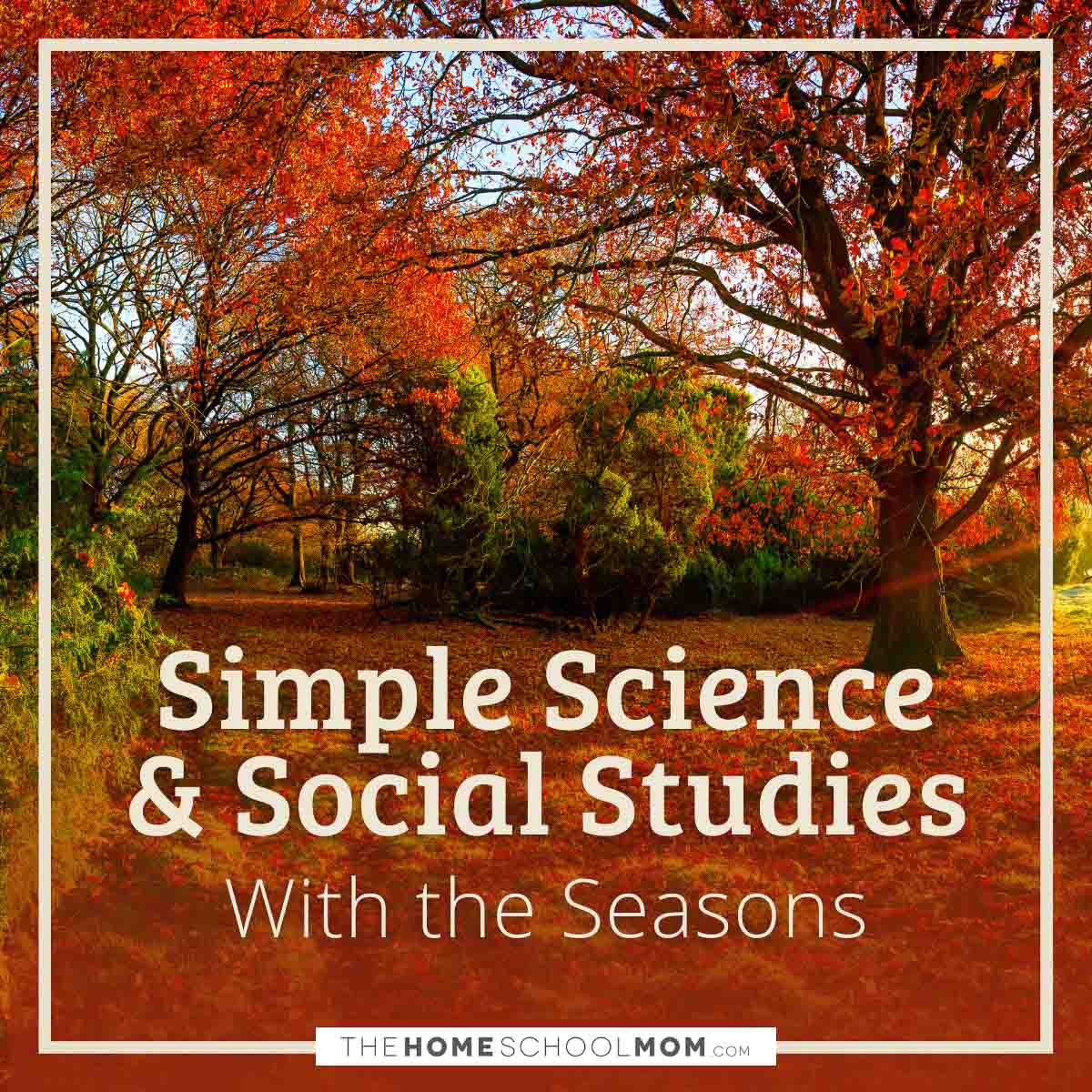When we notice and celebrate seasonal change, what we're really doing is helping our kids learn elementary science and social studies. Lean into it!
Summer to fall, fall to winter, winter to spring, spring to summer: what is happening with the sun and the tilt of the earth and the length of the days and the leaves on the trees and the gourds in the garden?
You don't have to do formal unit studies, or you can if you and the kids thrive on them.

But you can also keep it simple. Kids will learn about the seasons from:
- seasonal read-alouds
- nature walks
- visits to the farmers market
- preparing and eating seasonal meals and snacks
- decorating your home together
- celebrating holidays and understanding their origins
- nonfiction videos and documentaries
- your response to their questions
Let's face it, we aren't always able to know the answers to our kids' questions—but we can demonstrate to them how we find out more. When we bring home a relevant book from the library, do an internet search on why leaves change their color, or find a good YouTube video about pumpkins, we've just demonstrated some basic forms of "research."
When we bake seasonal apple crisp or pumpkin bread, we are giving our children a chance to live into the tradition of celebrating the bounty of harvest—and we are creating a bank of seasonal memories that will be part of their lives forever.
Go apple picking or gather some apples at the market and enjoy one of my favorite activities—baking whole apples with cinnamon and sugar—with your kids. Let them help mix the cinnamon filling. Let each kid "stuff" their own apple. Talk about the colors they see and the delicious smells detected by their senses. Talk about the varieties of apples and where cinnamon comes from.
Call it social studies. Call it science. Call it a hands-on project.
Call it a day—a lovely, cinnamon apple day.




 A popular speaker at homeschooling conferences, business groups, and parents’ groups, Jeanne Potts Faulconer homeschooled her three sons in North Carolina, Mississippi, and Virginia for twenty years. Holding her Master of Arts degree in Communication, Jeanne conducted portfolio evaluations for Virginia homeschoolers for evidence of progress for many years. Jeanne is a former college faculty member, former editor for several publications, news correspondent for WCVE, and former director of Brave Learner Home. She is the contributing editor for TheHomeSchoolMom newsletter and writes the popular Ask Jeanne column addressing homeschool parents' questions here at TheHomeSchoolMom.
A popular speaker at homeschooling conferences, business groups, and parents’ groups, Jeanne Potts Faulconer homeschooled her three sons in North Carolina, Mississippi, and Virginia for twenty years. Holding her Master of Arts degree in Communication, Jeanne conducted portfolio evaluations for Virginia homeschoolers for evidence of progress for many years. Jeanne is a former college faculty member, former editor for several publications, news correspondent for WCVE, and former director of Brave Learner Home. She is the contributing editor for TheHomeSchoolMom newsletter and writes the popular Ask Jeanne column addressing homeschool parents' questions here at TheHomeSchoolMom.
Leave a Reply